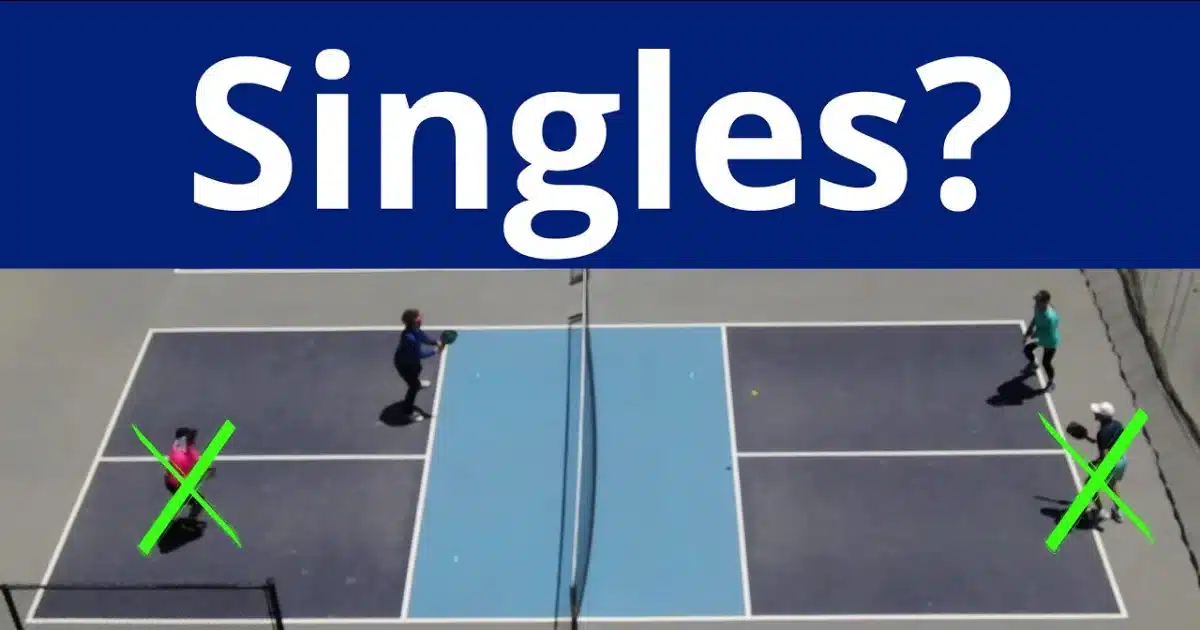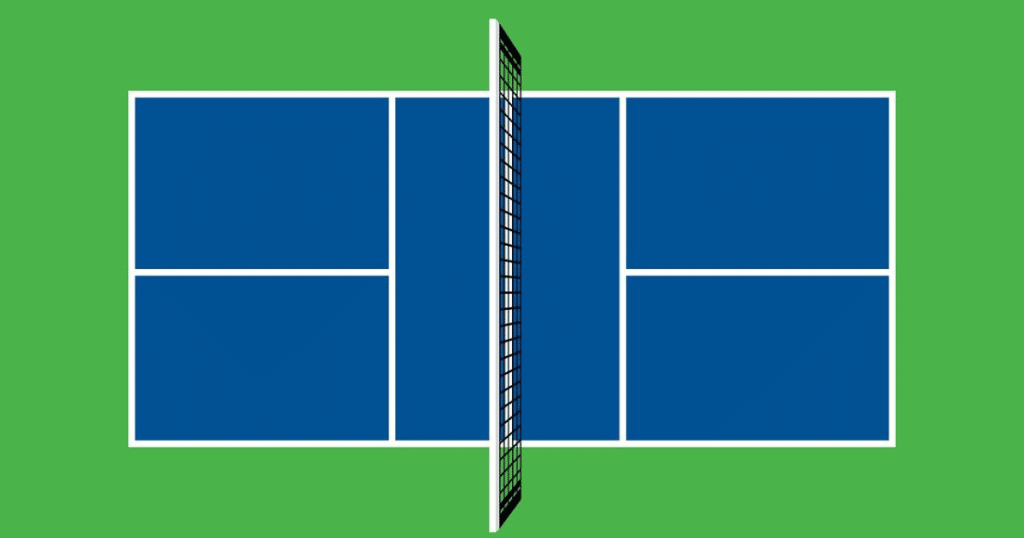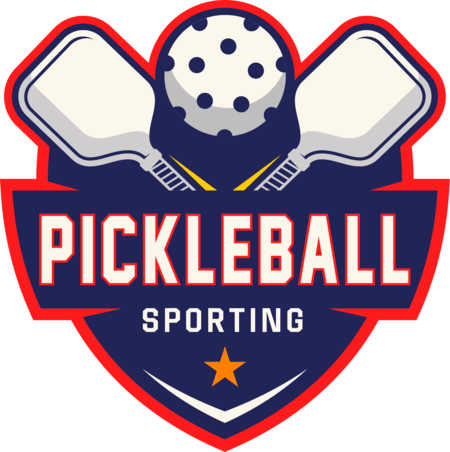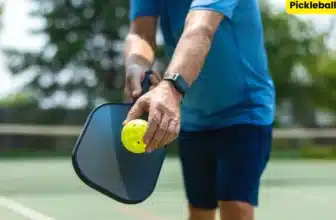
People who play pickleball may use the words “singles” and “doubles” to talk about the different types of games. It’s likely that you have questions about these terms if you are new to paddle and racket sports. More likely, you will have questions about how to play and score a singles pickleball game. Pickleball games are played a little differently for singles and pairs. There are two people in a singles pickleball game, one on each side. When there is only one player, the serve starts on the server’s right side court if the score is even and on the server’s left side court if the score is odd.
In this article, we will tell you how to play a singles game of pickleball. It also includes info on how to score your game, serve better, and follow the rules of the court. The good news is that singles rules are much easier to understand than doubles rules, like how to keep score and when to serve. I’ll say more about that soon.
Understanding Pickleball Singles Rules

There are two types of games you can play in paddle sports: singles and pairs. All this means is that you can play either a solo game (1 vs. 1) or a doubles game (2 vs. 2). Although the pickleball rules for doubles may be easier to understand, the game itself is very hard, especially the physical part.
In this way, singles are more like tennis since each person has to cover the whole side of the court. You may have to move quickly and run a lot in pickleball because the balls bounce lower and are touched softer. A different kind of singles, though, takes some of the cardio out of the court. It’s called “skinny singles.
What is Skinny Singles?
Thin singles is a type of pickleball singles where the court is split in half, making it easier to move around while still playing one-on-one. The court can be split in half down the middle, or the diagonal service courts can be used to make the playing area. Sneeky doubles is strange because it plays more like doubles than normal singles. The reason for this is that you are in charge of half the court, just like you might be in doubles.
As with singles pickleball, you serve until you make a mistake. If you do, it’s a “side out,” which is the pickleball name for losing control of the serve and giving it to the other player or team. On the other hand, in doubles, after losing a point, server 1 will hand off serving to their partner, server 2.
You probably won’t see skinny singles at an event, but it’s a fun way to train or get better at a certain skill. That’s what makes tennis so useful. Choose between a game where you play with a person and get help, or a workout where you play by yourself and do pickleball drills. There are also skinny singles courts for when you just want to play pickleball with one friend for fun or to work on improving a certain part of your game.
How do you play pickleball by yourself?
There are different rules for serving and playing in singles pickleball, but there are three things you should know about serving in singles that affect how you score and how the game goes overall:
- Each player serves first from the right side.
- This person serves on the left side the next time if they win their first serve.
- The player keeps serving, going back and forth between the right and left sides until they make a mistake. The other player then gets the serve.
You can at least keep the flow of a game going if you understand these three easy rules of serving and remember that the score will always be even when served from the right side and odd when served from the left.
Strategies for Singles Pickleball

Deep Serves: Serve deep into your opponent’s court. This will push them back and hinder offensive shots.
Angle serves: Try different angles. This can make your opponent move and give you rally control.
Plans to Return: Like serving, deep returns hold your opponent in the baseline, limiting their attack.
Cross-Court Returns: Cross-court shots make your opponent run and free up the court for your next shot.
Manage the Centre: Be towards the court’s center. You can better reach shots on both sides.
Precision, patience: Singles require patience. Wait for the proper opportunity to attack and aim carefully. Vary Your Shots Try dinks, drives, and lobs. This confuses and unbalances your opponent.
Stay Alert: Prepare to act immediately. Singles pickleball requires good footwork. Return to neutral fast after hitting a shot. This prepares you for your opponent’s next shot. Watch your opponent’s shots to predict where they’ll hit the ball. You may gain a split-second positioning edge.
Pickleball Singles Serving Rules in Detail
Serving rules in singles pickleball are crucial for setting the tone of the game. Here’s a detailed look at the singles pickleball serving rules:
- Foot Faults: The server must have at least one foot behind the baseline during the serve. If the server steps on or over the line before making contact with the ball, it is considered a foot fault.
- Ball Height and Paddle Position: The serve must be underhand with the paddle below the server’s waist level. The ball must be struck below the waist.
- Service Motion: The server must hit the ball in one continuous motion. Stopping or hesitating during the serve can result in a fault.
- Service Court: The ball must land in the diagonally opposite service court. If the ball lands outside this area, it is a fault.
- Non-Volley Zone: The serve must clear the non-volley zone. If the ball lands in the non-volley zone, including the lines that border it, it is a fault.
Tips for Serving in Singles Pickleball
| Practice Consistency in Pickleball: | Consistent serves are essential in singles. To reduce mistakes, spend some time working on your serves. |
| Spin: | If you add spin to your serve, it can be harder for your opponent to return. Try out different spins to find the one that works best for you. |
| Look for Weaknesses: | It’s smart to aim your serves at your opponent’s weaker side if you see one, like the backhand. |
Conclusion
Anyone who wants to be fantastic in this kind of pickleball singles must first understand and be proficient with the rules. From strategic play to serving rules, every element is quite important for your whole performance. This improves your serves, honing your shots and using calculated moves to outplay your opponent. Your singles pickleball game will improve with effort and practice, and you will be able to savor the excitement of this great activity.
These singles pickleball rules and techniques can help you advance your game and enjoy the sport even more, regardless of your level of experience. So grab your paddle, strike the court, and begin today’s practice
FAQs
What are the key differences between pickleball singles and doubles?
In singles, players cover the entire court alone, while in doubles, they have a partner. Singles play requires more physical stamina and strategic thinking compared to doubles. Additionally, the scoring system and court positioning may vary between singles and doubles matches.
How do serving rules of pickleball singles from
doubles?
Pickleball singles serving rules follow the same guidelines as doubles, with players alternating sides based on even or odd scores. The main difference is that players serve alone without a partner. Additionally, serving from specific positions on the court may vary depending on the score and game situation.
What strategies are effective in singles pickleball?
Effective strategies include strategic court positioning, aggressive shot selection, and targeting your opponent’s weaknesses. Maintaining a positive mindset and staying focused are also crucial. Additionally, adapting your strategies based on your opponent’s playing style and preferences can give you a competitive edge on the court.
What are the benefits of playing skinny singles pickleball?
Skinny singles offers a less physically demanding option for players while still providing the excitement and challenge of singles play. It allows players to experience singles pickleball in a more accessible way, making it ideal for players of all ages and skill levels.
Additionally, the smaller court size encourages faster-paced rallies and strategic shot placement, enhancing the overall playing experience.
How can I improve my singles pickleball game?
To improve your singles pickleball game, you need to practice regularly, stay focused, and be willing to learn, just like you do for every new thing you wish to learn, right? Try to work on your footwork, shot placement, and strategic thinking to enhance your skills on the court. It is also helpful to study your own matches and observe other players to gain valuable insights and improve your game.
Keep seeking opportunities to grow and improve, and you can elevate your singles pickleball game to new heights.
Bottom Line
Pickleball singles is a good way to challenge yourself and enhance your game. If you love pickleball, trust us, you would love this new addition to your game. With its unique rules and strategies, singles play offers a very different experience that can improve your skills and boost your confidence on the court.
Whether you are a seasoned player or new to the game, exploring singles pickleball and its variations like skinny singles can add a new level of excitement to your pickleball journey.






